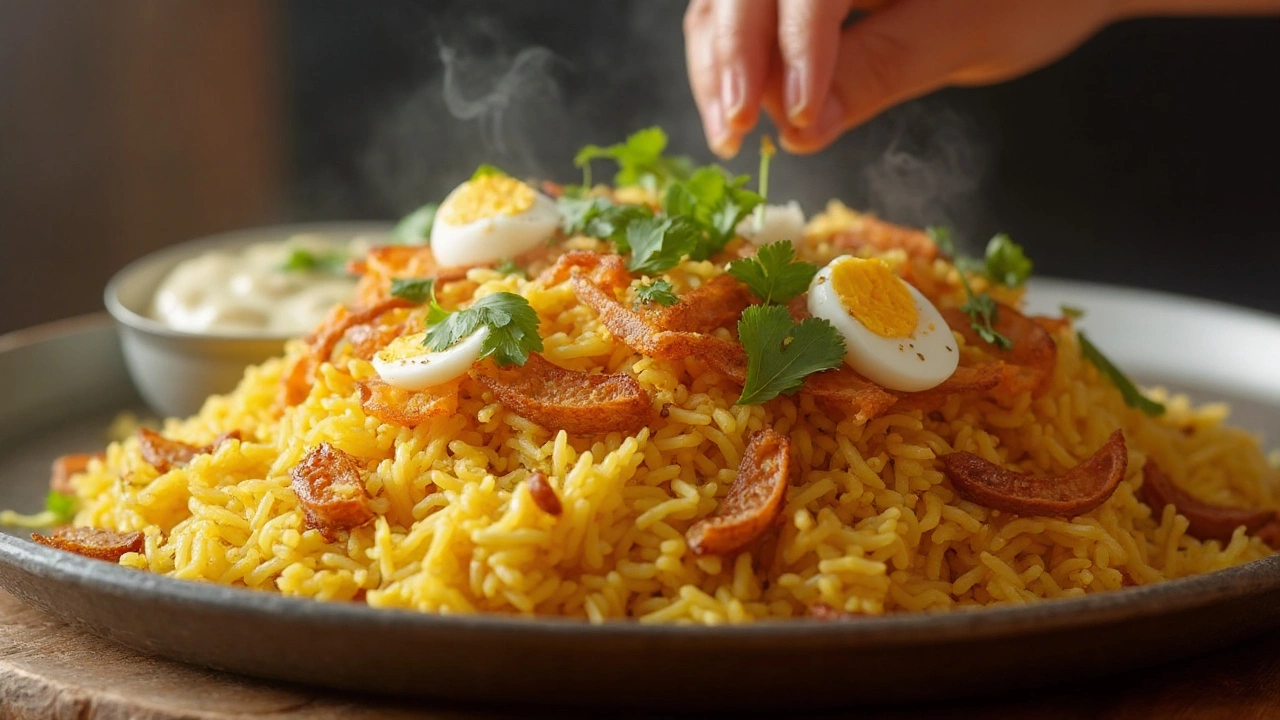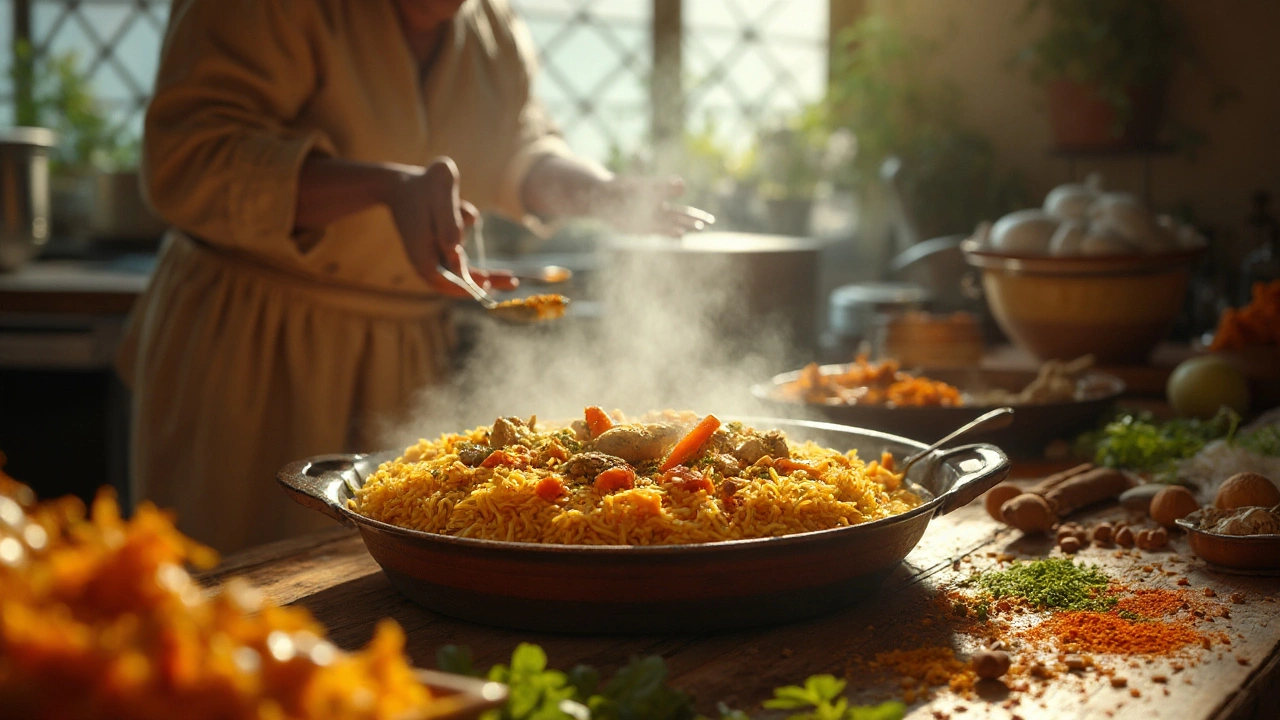5 Aug 2025
- 0 Comments
Isn’t it kind of cruel that something as heavenly as biryani has to be this tricky to pull off? It promises fluffy, fragrant rice, juicy meat (or veg!), and that famous mix of spices that seems to make time slow down when you take a bite. But cooking biryani at home often ends with either mushy rice, bland taste, or the haunting smell of burnt bottom. If you’ve ever spent hours following a YouTube chef, only to land up with something closer to pilaf than biryani, you’re far from alone.
Biryani’s Balancing Act: What Makes It a Challenge?
There’s a reason why biryani is seen as the gold standard of Indian cooking, the dish served at celebrations and family reunions, not random weeknights. First up—biryani isn’t just about tossing together rice, meat or paneer, and spice. The whole game is about layers. You need each grain of rice to stay separate, every mouthful to carry flavor, and the meat to cook perfectly without drying out or turning chewy. That means a thousand opportunities for disaster, even before you deal with the pressure of expectation (or hungry guests eyeing the kitchen).
If you think I’m making this sound dramatic, here’s a peek at how complicated biryani basics really are:
- Rice has to be 70% cooked, then drained at the exact right moment. Go over, and you get mush; go under, and it’s crunchy.
- Spices must be fried just enough for their aromas to bloom, but not burn.
- The meat (or potatoes/paneer for vegetarians) should be marinated long enough to soak in all the flavor but not too long, especially for seafood, or it falls apart.
- Layering means rice, then meat, then fried onions, then herbs, saffron – each layer needs different treatment.
- The ‘dum’ (steam) step at the end needs a tight seal you just can’t fake with a loose lid—traditionally, dough is used to glue the pot shut.
What do these steps add up to? At least a dozen pans, a timeline you can’t speed up, and the patience of a saint. It’s no surprise that a survey done in Hyderabad in 2023 found that 68% of home cooks gave up on biryani after the first failed attempt and opted for biryani from a restaurant instead.
| Step | Common Mishap | Consequence |
|---|---|---|
| Soaking & parboiling rice | Overcooking rice | Mushy rice, loses grains |
| Frying onions | Under or over-frying | Soggy or bitter taste |
| Marination | Short marination | Meat lacks depth of flavor |
| Layering | Uneven layers | Patchy taste, inconsistent texture |
| Dum/sealing pot | Poor seal | Dry dish, flavors escape |
If all that’s not enough, people often don’t realize that biryani comes in dozens of regional avatars—Hyderabadi, Kolkata, Thalassery, Lucknowi, and more. Each has its quirks and rules. Swap even one step—like using tomatoes in a Lucknowi biryani, or skipping dry rose petals in a Kolkata version—and purists will spot the ‘mistake’ a mile away. The dish is both art and science; one that tests your ability to follow a method but also demands sharp instincts and loads of improvisation.

The Science (and Magic) Behind Perfect Biryani
What separates an average biryani from a great one? Every single element—right from the variety of rice (almost always aged basmati, with long, sturdy grains) to the quality of spices—has to be just right. For rice alone, there’s serious chemistry. Basmati is prized not just for its length, but for its low starch content, which is why it doesn’t stick together. But if you don’t rinse it enough or soak it for 30 minutes before cooking, you’re doomed with sticky rice. Using fresh, instead of aged, basmati can turn the most diligent biryani into a disappointment.
The spice mix (what fancy folks call ‘masala’) gets its power from whole spices—bay leaves, cloves, cardamom, cinnamon, mace. These aren’t just flavor-bombs; they interact with the fat in ghee or oil to release essential oils that infuse the entire dish. Skip roasting whole spices, and the taste is flat, not perfumed.
The meat needs care too. Chicken goes dry if it spends too long snugged up with the rice, while mutton needs hours to soften and surrender flavor. Many home cooks try shortcuts—pressure cooking, for instance. While speedy, this flattens complexity, making biryani taste more like a stew over rice. Fish or shrimp? They’re so delicate, they should barely touch the heat during the dum phase, or they shred to bits.
Dum, or slow cooking on lowest heat, is still a mystery for many. Old-school cooks place a tava (flat skillet) under the biryani pot to slow down direct heat, creating gentle steam. Sometimes, a heavy plate and a brick on top amplify that effect. Skip this, and you’ll either scorch the bottom or create a biryani sauna, ruining the texture.
Let’s look at authentic Hyderabad-style biryani: in a 2021 kitchen experiment, professional chefs clocked that it took roughly 185 minutes to prepare from start to finish, and involved 32 specific steps. Most home cooks skip up to 8 of those, especially steps like slow caramelization of onions or treating saffron with warm milk. Each shortcut chips away at magic.
You might find this obsessive, but the results show up in taste. Hyderabad’s Paradise Restaurant claims to sell 15 tons of biryani a day, and their cooks train for months to get just the rice right. It’s more emotional than technical for many—a badly made biryani turns into a heartbreak at family gatherings. Ever noticed your aunt standing guard at the stove, shooing away helpers? That’s why—she knows too many small things can ruin the biryani.

Tips, Tricks, and Traditions for Getting Biryani Right
The good news: nobody was born making biryani like a pro. It’s built on patience, practice, and the willingness to mess up your first, second, and probably third batch. But there are tricks you can steal from master biryani makers that make a real difference, even in your home kitchen.
- why is biryani difficult to make? It’s all in the details—a lost step or swapped ingredient shifts the entire balance.
- Use only top-quality, aged basmati rice. If yours isn’t fragrant and long-grained, try soaking it for 45 minutes and rinse three times—this removes excess starch.
- Always cook rice in lots of salted water, just like pasta. The salt seasons the rice from inside, not just on the surface.
- For onions, slice them thin and fry slow—don’t crowd the pan. They transform from sharp to sweet only after 15-20 minutes, turning deep golden brown. This is key for authentic flavor.
- Marinate the meat with yogurt, salt, and spices—at least two hours for chicken, overnight if using mutton. Add a splash of lemon juice to help tenderize.
- Watch clear signals: if the oil separates from the masala, that’s your cue that the spices have cooked through.
- Layer thoughtfully. Spoon half the rice, then the meat (with every bit of marinade), then more rice. Top with fried onions, fresh mint, and saffron soaked in warm milk for that signature biryani perfume.
- Seal your pot well—use a simple flour-water dough to keep it airtight. Set the flame to low and allow the dum to do its thing—the meat cooks, the rice finishes, flavors blend. The aroma leaking out is the signal you’re close.
- Let it rest. Ten minutes off the heat (with the lid on) helps everything settle and flavors to deepen further.
Still worried about getting it right? Even star chefs admit they only learned after burning and botching a few batches. Start small—half a batch or less. Taste as you go, make notes about where things got tricky, and try again. Don’t get tempted by ‘one-pot’ shortcut recipes online—they’re fine in a pinch, but if you want that authentic experience, you’ll need to fuss over every step.
If you keep at it, one day you’ll notice a kitchen that smells just like a wedding feast, rice that flakes in your fingers, and guests fighting over the crispy browned bits at the bottom. That’s the magic you chased when you first decided to tackle biryani. And believe me, it’s worth it.
